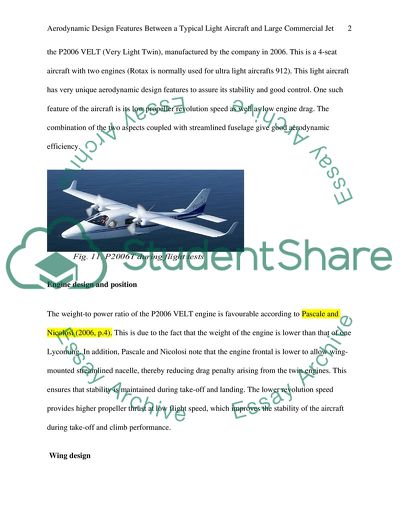Cite this document
(Aerodynamic Typical Light Aircraft vs Large Commercial Jet Design Features Essay Example | Topics and Well Written Essays - 1250 words, n.d.)
Aerodynamic Typical Light Aircraft vs Large Commercial Jet Design Features Essay Example | Topics and Well Written Essays - 1250 words. https://studentshare.org/engineering-and-construction/1780263-subject-aerospace-engineering-to-compare-and-contrast-the-aerodynamic-design-features-between-a-typical-light-aircraft-and-large-commercial-jet
Aerodynamic Typical Light Aircraft vs Large Commercial Jet Design Features Essay Example | Topics and Well Written Essays - 1250 words. https://studentshare.org/engineering-and-construction/1780263-subject-aerospace-engineering-to-compare-and-contrast-the-aerodynamic-design-features-between-a-typical-light-aircraft-and-large-commercial-jet
(Aerodynamic Typical Light Aircraft Vs Large Commercial Jet Design Features Essay Example | Topics and Well Written Essays - 1250 Words)
Aerodynamic Typical Light Aircraft Vs Large Commercial Jet Design Features Essay Example | Topics and Well Written Essays - 1250 Words. https://studentshare.org/engineering-and-construction/1780263-subject-aerospace-engineering-to-compare-and-contrast-the-aerodynamic-design-features-between-a-typical-light-aircraft-and-large-commercial-jet.
Aerodynamic Typical Light Aircraft Vs Large Commercial Jet Design Features Essay Example | Topics and Well Written Essays - 1250 Words. https://studentshare.org/engineering-and-construction/1780263-subject-aerospace-engineering-to-compare-and-contrast-the-aerodynamic-design-features-between-a-typical-light-aircraft-and-large-commercial-jet.
“Aerodynamic Typical Light Aircraft Vs Large Commercial Jet Design Features Essay Example | Topics and Well Written Essays - 1250 Words”. https://studentshare.org/engineering-and-construction/1780263-subject-aerospace-engineering-to-compare-and-contrast-the-aerodynamic-design-features-between-a-typical-light-aircraft-and-large-commercial-jet.


